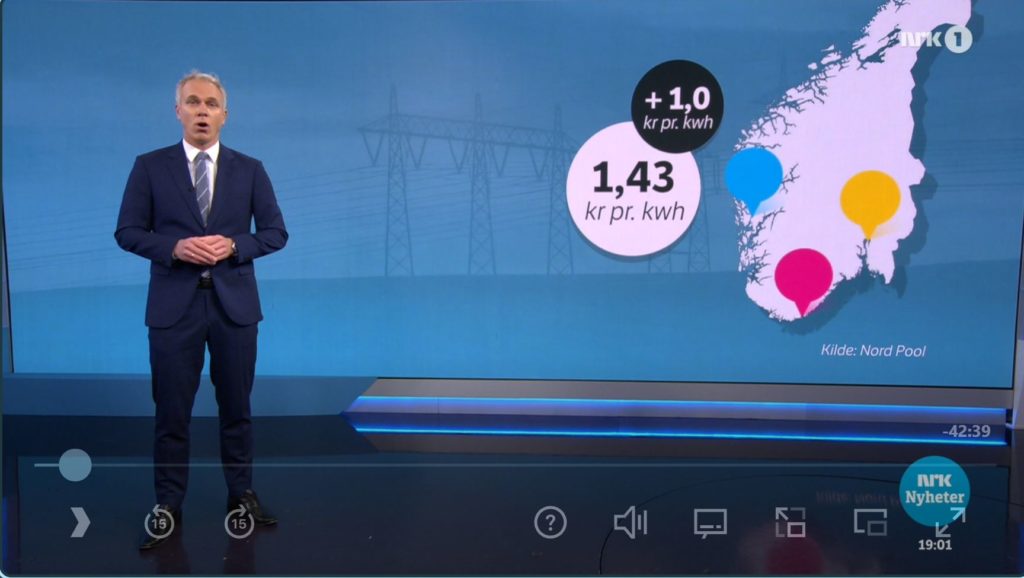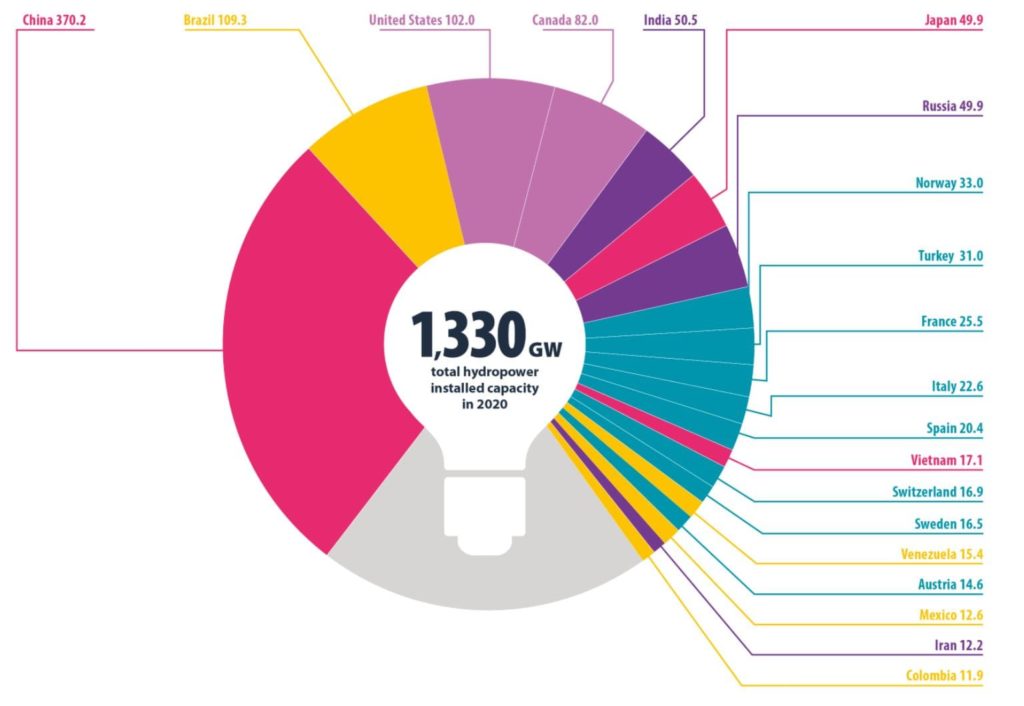
edited and translated from original in Norwegian by Bård Ole Thorsen
Unique to Norway is that we produce 98% of all our electricity from renewable energy; hydropower.
That is an incredible amount of energy. Clean energy as such. In a global context, only 6 countries in the world produce more hydropower than Norway and Norway also punches way beyond its size when it comes to installed capacity. We have more than enough electricity from renewables. In fact, we produce so much electricity that Norway is the country in Europe that exports the most electricity. WE HAVE power for these cold winters, ACTUALLY. But when we sell the electricity in the summer (read drain the water sources that can be used in the winter for export), then there is a deficit here in Norway in the winter.
Nevertheless, it is only autumn and we experience that we “lack power” and thus see record-high prices in several parts of the country. How can this be? We need to look at history.

In the early 1900s, it was a rapid development of hydropower plants around the country. This electricity production became a hub in settlements and cities. Often because the industry, for example, aluminum production, needed a lot of electricity, and it was natural to lay these close to the hydropower plants. This created many jobs. The population got both jobs, but also cheap electricity for their houses for heating, etc.
Compared to our neighboring Sweden, they are not used to “electric heating” as here in Norway. This is because electricity was costly in Sweden – as opposed to here in Norway, where electricity became very cheap.
Electricity was seen as infrastructure, like water, sewage, waste disposal, and road networks. Electricity was something everyone had to have. Electricity was something that people had to have for the “wheels” to turn. So electricity was not something anyone would make money on. Just like now, there is no one to profit from the water that comes from the tap in our houses. What we pay in connection with water and sewage is maintenance etc. Our drinking water is not on “tender” or sold based on demand.
This cheap electricity meant that, despite the fact that wages in Norway were high, Norway, as an industrial country, was still competitive precisely because of the cheap electricity. Like when we extracted, for example, iron ore in the mountains – then we could refine it here and export a refined product to our international customers.
This was the case until 1991. The electricity produced was “the property of the whole nation.” The Norwegian population had paid dearly for the development through the tax slip and customer relations (consumption). It can be said that electricity production in Norway was built to gain a competitive advantage.
In 1989, we got a government consisting of the Conservatives, the Christian People’s Party, and the Center Party, led by Jan Peder Syse (Conservatives). Then electricity was turned into a market commodity through the liberalization of energy laws. Eivind Reiten was Minister of Petroleum and Energy (Center Party) and is described as the “father” of these legislative changes.
What did this change in the law mean in practice, and what does it have to do with current electricity prices?
With the change in the law, Norwegian power production was “privatized.” Now the power made was to be sold at the best price, such as the Grandiosa pizza, the snow drawer, or the new Nike sneakers. The price of electricity was to be regulated on demand. That is when you have high demand and high prices. Low demand means low price, just like the snow shovel. You get the best price in the winter and the worst price in the summer. This is logical. Stores have learned this and adapted their inventories to demand, such as winter/summer, etc.
With this change in the law, you also have the same mindset regarding electricity. Of course. Of course, those who sell electricity will make as much money as possible. But what happens to us as consumers? Yes, we have to pay dearly for electricity when we need it most, but it is also the cheapest when we need it least. This way, “the hydropower of the entire population” was stolen from the Norwegian people. Electricity became expensive, and industry and jobs were moved abroad. And with that, small communities began to die out. In 1994, Norway became part of the EEA. Thus, the EU’s energy directive was incorporated into the EEA agreement.
After various directives have been adopted in the Storting and incorporated into the EEA agreement, the ESA (EFTA Surveillance Authority) ensures Norway complies with the directives 100% and the EU’s laws. If Norway does not do what the EEA agreement commands – Norway can be convicted by the EFTA Court.
The EU has established its energy agency, Acer, of which Norway became a member in 2018. The EU’s goal is a common European electricity market. Thus began massive planning and development of power cables for the EU, expenses charged to Norwegian customers through increased grid rent. The development of, for example, wind turbines is not electricity that we in Norway need. In addition, extra power grids are now being built for wind turbines to go to households in Norway.
In other words, clean, renewable energy from hydropower is sold abroad. In contrast, the dirty unstable wind power is sold here, in addition to the fact that we have to import electricity from the continent, which we as a population have to pay dearly. You and I have to pay for the power grid built today. Therefore, we have to pay again for something that our ancestors paid for us in the past and that we should enjoy in the future.
I would add that it costs 5 – 12 øre to produce 1 kWh. As a customer, you pay an average of 100 øre per kWh plus grid rent. That is, there is a 95 øre or 2000% surcharge on the item for you as a customer.

Marius Holm Rennesund, the power analyst in Thema Consulting, blames it on the cold weather and lack of wind (!)
“We produce very well from water and wind in Central Norway.” OUR LOW PRICES ARE THANKS TO WINDPOWER!
Says Stig Tore Laugen Executive Vice President for Communications and Corporate Social Responsibility at TrønderEnergi, who emphasizes windpower’s importance. All while the graph from the Electricity map shows that wind currently produces 67 MW. That is 3.75% of the capacity of 1790 MW. Water, on the other hand, produces 2200 MW. Otherwise, he talks about good transmission lines from Sweden. But only 32.9 MW of power comes from Sweden, which is 0.98% of the electric power available in Central Norway. On the other hand, there are 485 MW from Northern Norway, 402 MW from Western Norway, and 156 MW from Southeast Norway. All more than what we get from Sweden and all from hydropower land. Eivind Salen, Motvind Norge





43 Comments
Pingback: Goal 7: Affordable and Clean Energy - Bergensia
Pingback: Why can't we just set a fixed, low price on electricity? - Bergensia
Pingback: Norsk korrupsjon – Helsetypen
Pingback: Politikerne har stjålet strømmen – Helsetypen
Pingback: วิธีแทงหวยหุ้น หวยสดเว็บ LSM99 จ่ายไว ได้เงินจริง
Pingback: 방콕물집
Pingback: Vote green for nature; we do not need more energy - Bergensia
Pingback: Betkick
Pingback: buy oxycodone online
Pingback: อัตราการจ่าย มาชัวร์เบ็ต
Pingback: Ezugi
Pingback: serene melodies
Pingback: ตารางการเดิมพันและอัตราจ่าย Yeh Yeh
Pingback: อ่านมังงะ
Pingback: japanese music mix
Pingback: รับรองเอกสาร
Pingback: ขายสายแลน
Pingback: ชุดสูทผู้หญิง
Pingback: ขออย
Pingback: you could look here
Pingback: psilocybe mazatecorum
Pingback: บริษัทกำจัดปลวก
Pingback: apex legends cheats
Pingback: ต่อขนตา สีลม
Pingback: ราคาเอเชียนแฮนดิแคป A1X2 เปิดให้แทงเฉพาะบอลสด ทำเงินได้จริง
Pingback: Buy Daniel Defense MK18 Tornado® Online With Crypto
Pingback: เค้กดึงเงิน
Pingback: ทางเข้า lucabet
Pingback: rca77
Pingback: 789bet
Pingback: ปั้มติดตาม
Pingback: ทางเข้าpg
Pingback: B1AU4IQ
Pingback: H Sod แทงหวยออนไลน์ 24 ชั่วโมง
Pingback: เว็บใจดี24 ทุนน้อยก็เล่นได้ แทงหวยขั้นต่ำ 1 บาท
Pingback: เว็บปั้มไลค์
Pingback: big bass splash slot
Pingback: ข้อดีของการเพิ่มยอดวิว
Pingback: 5 อันดับเว็บพนันออนไลน์ดีที่สุด สมัครบาคาร่า เว็บตรงอันดับ 1
Pingback: แว่นตากันแดดผู้หญิง
Pingback: ระบบสมาชิก
Pingback: เว็บพนันออนไลน์เว็บตรง
Pingback: รับผลิตเหรียญรางวัล